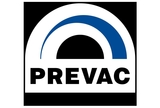Plakat Sara Weronika Seweryn (P32-Wt)
Optimization of tip-enhanced Raman spectroscopy for probing the chemical structure of DNA
Instytut Fizyki im. M. Smoluchowskiego, Uniwersytet Jagielloński, Profesora Stanisława Łojasiewicza 11, 30-348 Kraków, Polska
Tip-enhanced Raman (TERS) spectroscopy combines the nanometric spatial resolution of Atomic Force Microscopy (AFM) and the chemical selectivity of Raman spectroscopy. A metal nanostructure deposited on the apex of an AFM tip, modifies the electromagnetic field of the incident laser light and enhances the Raman scattering cross-section from a small amount of sample located very close to the probe apex, improving the sensitivity even up to a single molecule level. In other words, TERS probes work as nanoantennas converting the electric field of an incident laser light into localised energy and changing near field from the sample to a far field, accessible to the objective.
In this presentation we report on investigations of the chemical structure of a new standard TERS sample and procedures of TERS substrates and TERS probe preparation. Despite numerous advances in TERS research, achieving good reproducibility and stable enhancement are still challenging, mainly due to the lack of well-optimized probes and sample preparation procedures. Additionally, currently used nanospectroscopic standard samples – carbon nanotubes (CNTs), have relatively simple chemical structure and, are therefore, far from real analytes, especially biological samples.
Several important steps in optimization of the TERS technique for efficient DNA measurements will be discussed, including a preparation of ultra-clean and atomically-flat gold substrates using template-stripping technique, fixative-free deposition of DNA on freshly template-stripped gold substrates, and optimization of probes preparation/modification procedures such as Au, Ag/Au and Ti/Au coating. The comprehensive comparison of the efficacy of several types of TERS probes and theoretical predictions of electromagnetic field generated from various probes will be demonstrated.










